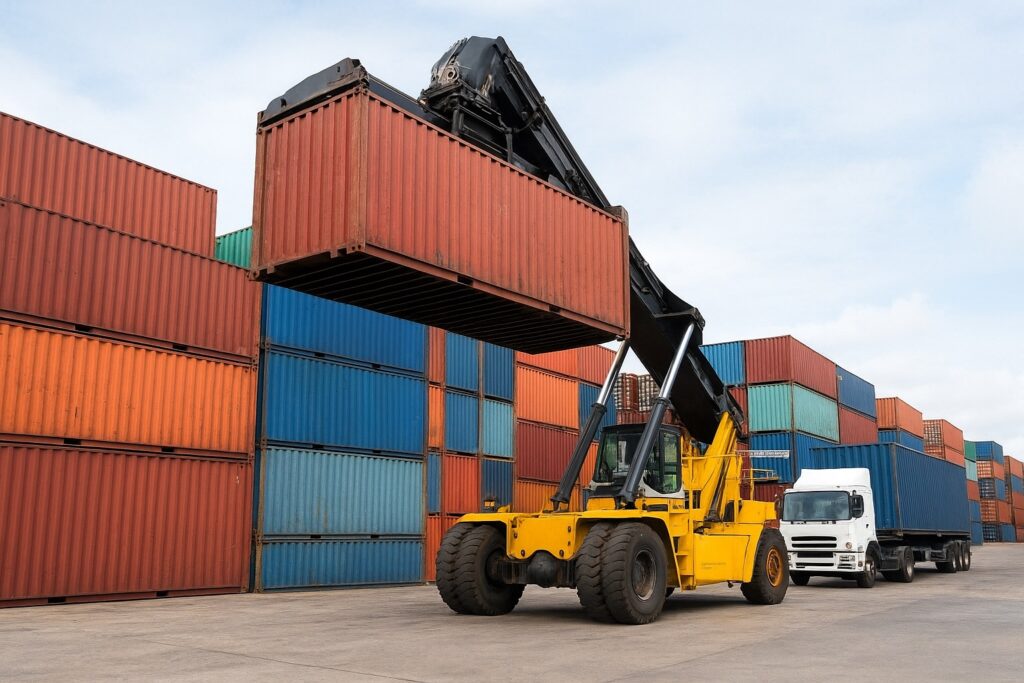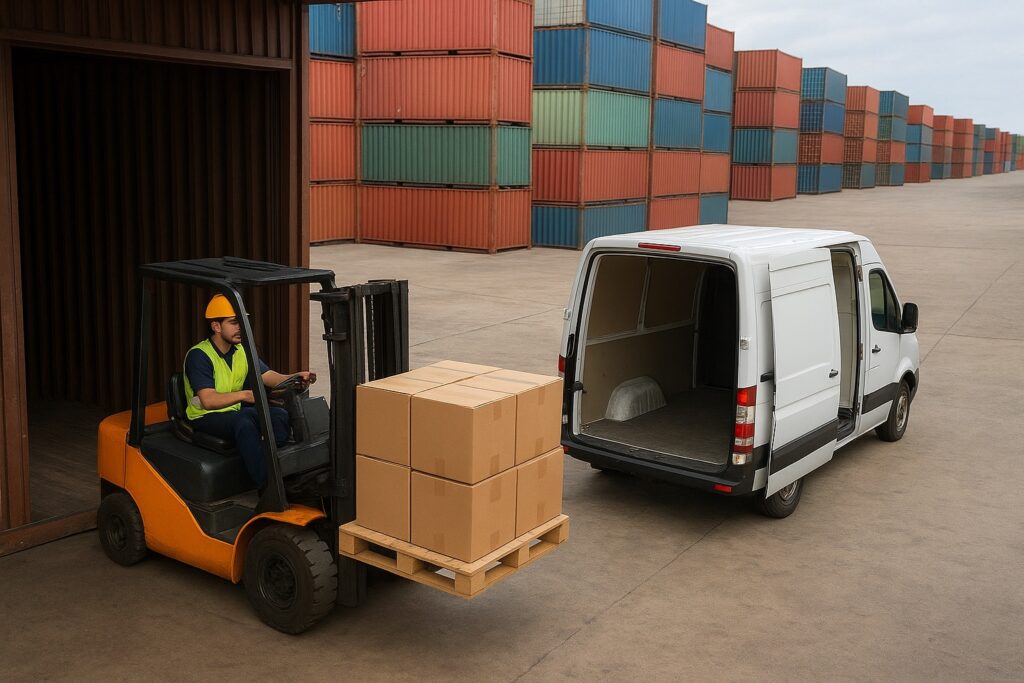As South Africa looks to rebalance its freight ecosystem, the Port of Gauteng project has become a national talking point – and the Road Freight Association’s support may prove decisive. With government and private investors seeking to revive the Durban–Gauteng corridor through a new R50-billion inland logistics hub, the RFA’s endorsement signals crucial alignment between policy and the operators who move the country’s freight.
The Association’s buy-in on the project’s Performance-Based Standards (PBS) vehicle framework adds weight to the initiative’s credibility – showing how smart-truck integration, fair modal access and transparent competition can drive a more balanced and sustainable supply chain.
Below is the full opinion piece from Gavin Kelly, CEO of the Road Freight Association, shared verbatim for FleetWatch readers.
Port of Gauteng: the drive to achieving an integrated logistics network
By Gavin Kelly, CEO of the Road Freight Association
The Road Freight Association has reviewed the recently released White Paper from Port of Gauteng and it notes that the developers have targeted a very ambitious project to address the huge shortfalls in the current logistics network, especially around rail and multi-modal operations involving rail, as well as the fundamental necessity of involving and allowing the private-sector to drive the integration of logistics.
The R50-billion project represents a pivotal opportunity to address the systemic inefficiencies crippling South Africa’s economic arteries, particularly the Durban-Gauteng freight corridor.
A bold step toward integrated logistics
The RFA has long championed an integrated, multimodal logistics network where road and rail function as collaborative partners, not competitors.
The vision outlined in Port of Gauteng White Paper, “to create a premier trade gateway that restores balance to our supply chain”, resonates deeply with the core principles of bringing about integrated freight operations and infrastructure.
Over the past four decades, the RFA has advocated for the development of inland ports to alleviate the severe congestion at the ports, and the freight handling operations immediately surrounding the ports, as well as inland depots like City Deep.
The White Paper correctly identifies the unsustainable pressure on the Port of Durban, a bottleneck that ripples through the entire economy – with an echo in the current inland freight handling depots.
The RFA has spent decades interacting with SARS Customs to make international trade (cross border freight movement requiring declarations to Customs) as simple and efficient as possible.
This has (together with other stakeholders) realised the current electronic clearance processes and the drive towards SmartBorders – making goods declaration and clearance possible anywhere and at any time by registered importers and exporters. This no longer requires a “centralised facility” where importers and exporters need to present themselves and the relevant documentation.
Block Chain has also brought efficiencies. However, container staging at strategic hubs (outside of the ports) such as Cato Ridge and the proposed hub in Gauteng will unlock further significant efficiencies.
Rebalancing rail and road efficiency
The Association echoes the need to shift rail friendly cargo off road onto rail (with the given that rail will actually be able to efficiently handle such cargoes) and the Association has reiterated and driven this approach.
The “access to rail by private operators” is key to the efficient operation of rail – but comes with its own operational challenges. The reality that rail currently handles less than 14% of volumes on the Durban/Gauteng Corridor is a vivid reminder of the work that needs to be done – and is in stark contrast to the National Development Plan (NDP) 50% target, highlights the gravity of the situation.
However, it is critical to emphasise that rail cannot succeed in a vacuum. The success of Port of Gauteng will be largely dependent on the efficiency of the road transport interface as road freight operations provide the vital “first- and last-mile” services that connect the rail network to the broader economy and customers who do not have sidings or efficient access to rail depots.
The White Paper envisages seamless train-to-truck transfers – which is a critical aspect if any success is to be achieved (think about the SAR container service in the 70s and 80s where dedicated fleets brought resized containers to the door of the customer).
Editor’s Comment: I recall those heady days with Henred Fruehauf getting an order for 600 skeletal trailers from SAR for that function. They were hauled by Oshkosh E-Series truck tractors which I described at the time as a sauna in summer and a fridge in winter. But what heady days of growth those were.
To achieve this, substantial investment must extend beyond the boundaries of the port to the surrounding road infrastructure and intermodal facilities. It is essential that true gateway is developed and built, not just a simple relocation of the bottleneck from Durban to Gauteng.
Smart trucks and the PBS connection
The explicit integration of Performance-Based Standards (PBS) vehicles into the design of the Port of Gauteng is intriguing but cognisance must be taken of the fact that this is still a pilot project, as well as the effect this will have on all road freight operators who operate standard, legal combinations.
The Association has been a leading advocate for the research and development of more efficient road freight vehicles for decades. Smart trucks are not necessarily vehicles that carry more payload – they are vehicles that bring compound efficiencies into the baseline operations of a fleet. That is where the future of smart trucks lies.
Vehicles (and drivers) that are safer, more efficient and reduce road wear per tonne of freight moved, reduce fuel consumption and bring about lower operational costs are the non-negotiable components in modern, competitive road freight logistics operations – for both micro and large road freight companies (operators).
All about New Economy efficiencies
As previously noted, the RFA has consistently supported the efforts of government to revitalise rail, including the historic opening of the network to private operators. The candid assessment in the White Paper of Transnet’s past operational and financial challenges on the Corridor underscores why private sector involvement and investment are so crucial.
Port of Gauteng may well provide the “missing link” that can make rail competitive again. By providing the world-class infrastructure and reliability that shippers demand, it creates a viable business case for the road-to-rail shift.
The realities of new market freight access also need to be taken into consideration – for example the demands of e-commerce and the logistical supply chains that this requires.
In the last five years, freight has morphed from large consignments into consumer operations with very small consignments – sometimes a single item – and this has in its own changed the realities within warehouses and consumer logistics supply chains.
The Port of Gauteng will need to be efficient and fast to deal with this demand – irrespective of the mode it uses to arrive at the port – and if this is to be containerised via rail to the port, then there will be huge asks on turnaround times, scheduling of services and destuffing of containers at the port. This, in itself, will place a huge “ask” on rail services.
Collaboration for a resilient freight future
The Association supports integrated modal operations – provided there is transparent cooperative competition within the port for various operators (rail, warehousing and road) – thus being based on a foundation of operational excellence and fair, competitive access for all parties.
Port of Gauteng is a project that aligns with the long-term vision of the RFA for a functional, efficient and integrated South African logistics supply chain. The success of the port will be our members’ success, and ultimately, the nation’s success.
The Association looks forward to collaborating with all relevant stakeholders in this project to improve the integration and operation of the logistics network. By working together, the proposed R50-billion investment will be better able to deliver on the promised potential to create jobs, reduce logistics costs, and build a resilient economic future for South Africa.
Editor’s comment: FleetWatch welcomes the RFA’s forthright endorsement of the Port of Gauteng vision. The Association’s recognition of PBS integration and private-sector rail access as cornerstones of future logistics reform highlights a mature, solutions-based approach.
It’s a view rooted in operational reality – that trucks and trains must cooperate, not compete. For South Africa’s freight economy to thrive, the RFA’s “view from the road” must stay central to how the nation designs its next-generation transport corridors.
Click here to access a recent FleetWatch article on the Port of Gauteng project.
Click on photographs to enlarge.






